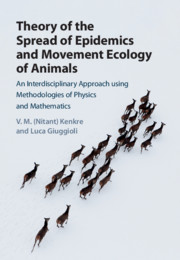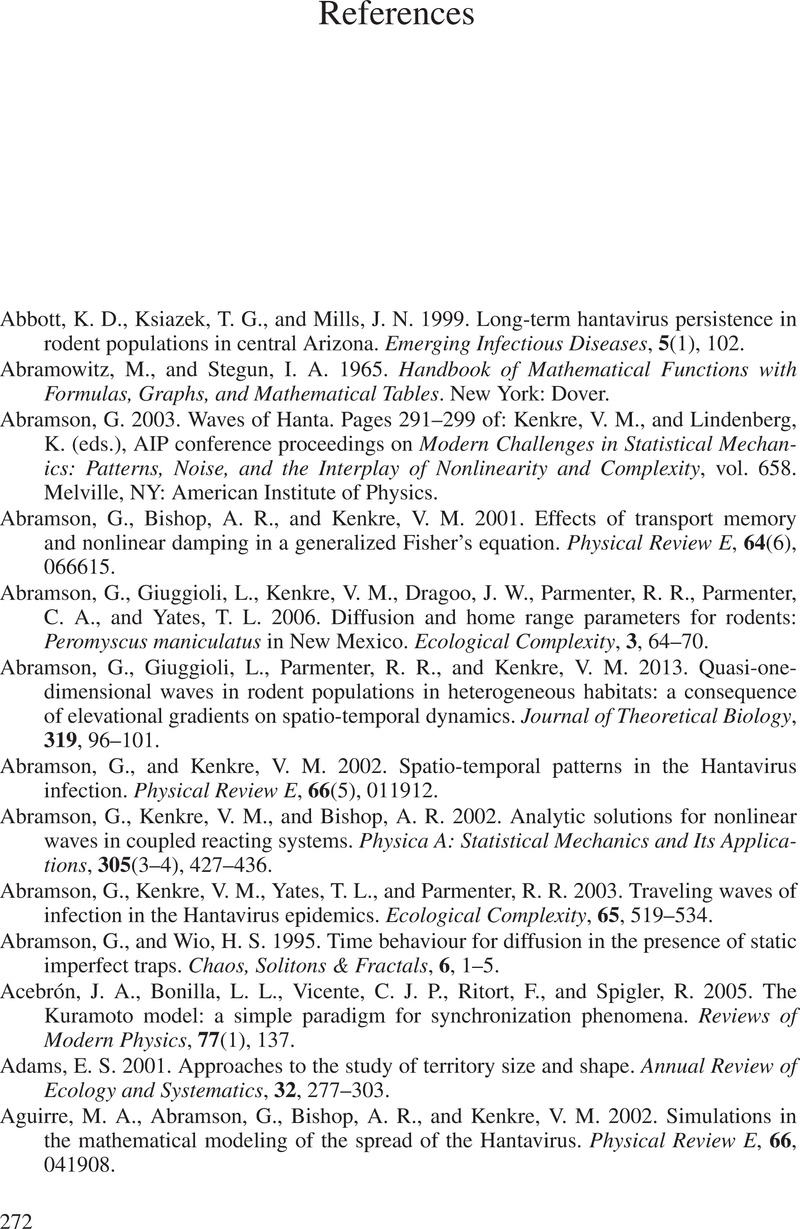 Theory of the Spread of Epidemics and Movement Ecology of Animals
Theory of the Spread of Epidemics and Movement Ecology of Animals Book contents
- Frontmatter
- Dedication
- Contents
- Foreword
- Preface
- Acknowledgements
- 1 Theoretical Framework underlying the Book
- 2 μ-Space Approach to the Study of Epidemics: Fisher Equation with Internal States
- 3 Abrupt Spatial Transitions: Patchiness and Extinction of Infection and Population
- 4 Results from Fisher Variants: Patterns from Long-Range Competition and Allee Effect in the Spread of Infection
- 5 Extraction of Parameters from Observations, Emergence of Home Ranges, and Applicability of the Fisher Equation for Bacteria
- 6 Explicit Incorporation of Home Ranges in the Theory of the Spread of Epidemics
- 7 Avoidance Interactions and the Emergence of Spatial Segregation
- 8 Attractive Interactions and Flocking
- 9 Related Investigations along Miscellaneous Directions
- 10 Summary and Future Directions
- Appendix A A Technical Appendix
- Appendix B A Historical Appe
- References
- Index
- References
References
Published online by Cambridge University Press: 14 January 2021
- Frontmatter
- Dedication
- Contents
- Foreword
- Preface
- Acknowledgements
- 1 Theoretical Framework underlying the Book
- 2 μ-Space Approach to the Study of Epidemics: Fisher Equation with Internal States
- 3 Abrupt Spatial Transitions: Patchiness and Extinction of Infection and Population
- 4 Results from Fisher Variants: Patterns from Long-Range Competition and Allee Effect in the Spread of Infection
- 5 Extraction of Parameters from Observations, Emergence of Home Ranges, and Applicability of the Fisher Equation for Bacteria
- 6 Explicit Incorporation of Home Ranges in the Theory of the Spread of Epidemics
- 7 Avoidance Interactions and the Emergence of Spatial Segregation
- 8 Attractive Interactions and Flocking
- 9 Related Investigations along Miscellaneous Directions
- 10 Summary and Future Directions
- Appendix A A Technical Appendix
- Appendix B A Historical Appe
- References
- Index
- References
Summary

- Type
- Chapter
- Information
- Theory of the Spread of Epidemics and Movement Ecology of AnimalsAn Interdisciplinary Approach using Methodologies of Physics and Mathematics, pp. 272 - 295Publisher: Cambridge University PressPrint publication year: 2021


